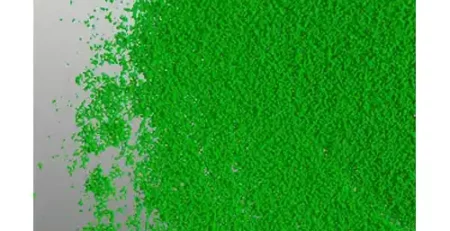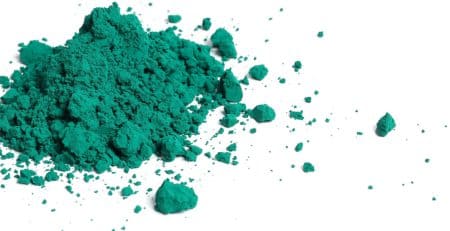What considerations should be taken into account when formulating Offset Ink with Bluish Green phthalocyanine Green pigment to achieve optimal rheology and opacity?
Understanding Offset Ink Formulation: Achieving Optimal Rheology and Opacity with Bluish Green Phthalocyanine Green Pigment
Introduction:
Offset ink is widely used in the printing industry to produce high-quality and vibrant prints. In order to achieve the best results, numerous considerations need to be taken into account when formulating offset ink with bluish green phthalocyanine green pigment. By focusing on factors such as rheology and opacity, we can create an ink that performs optimally and meets the needs of our customers.
1. The Role of Rheology
Rheology refers to the flow characteristics of a fluid, in this case, the ink. It is essential to consider the rheology of the offset ink to ensure smooth and uniform printing. Here are some important factors to consider:
– Viscosity: This refers to the thickness of the ink. It should be carefully controlled to avoid issues such as ink spattering or poor transfer onto the substrate.
– Thixotropy: Thixotropy is the property of certain fluids to become less viscous when subjected to shear forces. Offset ink should possess thixotropic properties to ensure optimal flow and easy transfer during the printing process.
– Shear thinning: Shear thinning is a phenomenon where the viscosity of a fluid decreases with increased shear stress. This allows the ink to flow easily through the rollers and onto the substrate, resulting in a smooth print.
2. Achieving Optimal Opacity
Opacity refers to the ability of the ink to cover the underlying substrate and produce vibrant colors. Here’s what you need to consider when aiming for optimal opacity:
– Pigment Concentration: The amount of bluish green phthalocyanine green pigment used in the ink will affect its opacity. Increasing the pigment concentration will result in a more opaque print.
– Particle Size: The particle size of the pigment also plays a crucial role in opacity. Smaller particle size ensures a more even distribution and improved coverage on the substrate.
– Binder Selection: The binder used in the ink formulation is important as it holds the pigment particles together. Choosing a binder that enhances the dispersion and adhesion of the pigment will lead to better opacity.
3. Pigment Dispersing Techniques
To achieve optimal rheology and opacity in offset ink, proper dispersing techniques for the bluish green phthalocyanine green pigment need to be employed. Here are a few methods used to disperse the pigment:
– Three-Roll Milling: This is a commonly used method in which the ink is passed through three rotating rollers to break down the pigment particles and achieve uniform dispersion.
– High-Speed Dispersing: This technique involves high-speed agitation of the ink using a disperser or homogenizer. It helps in achieving a fine and uniform dispersion of the pigment.
– Nano-milling: In this method, the pigment particles are reduced to the nano-scale using specialized equipment. Nano-milling improves the color strength and dispersion of the pigment.
4. Testing and Adjusting Rheology
Once the offset ink formulation is prepared, it is important to test and adjust the rheology to ensure optimal performance. Here are some common methods used for testing and adjusting rheology:
– Brookfield Viscometer: This instrument measures the viscosity of the ink at different shear rates, helping to determine the optimal viscosity for printing.
– Adding Thickeners or Thinners: Based on the viscosity results, thickeners or thinners can be added to adjust the ink’s flow properties and achieve the desired rheology.
5. Testing and Adjusting Opacity
In addition to rheology, testing and adjusting the opacity of the offset ink is crucial. Here are a few techniques used to assess and enhance the ink’s opacity:
– Opacity Meter: An opacity meter helps measure the amount of light absorbed or scattered by the ink, indicating its opacity. Based on the results, adjustments can be made to improve opacity.
– Increasing Pigment Concentration: If the opacity is not sufficient, increasing the concentration of the bluish green phthalocyanine green pigment may be necessary to achieve the desired results.
FAQs about Formulating Offset Ink with Bluish Green Phthalocyanine Green Pigment
1. Q: How does rheology affect the printing process?
– A: Rheology determines the flow and transfer properties of the ink, ensuring smooth printing and preventing issues like ink spattering.
2. Q: What factors influence the opacity of offset ink?
– A: Pigment concentration, particle size, and binder selection are key factors that impact the opacity of the ink.
3. Q: How can pigment dispersing techniques improve the quality of offset ink?
– A: Proper pigment dispersing techniques ensure uniform dispersion, leading to enhanced color strength and coverage on the substrate.
4. Q: What methods are used to test and adjust rheology?
– A: Instruments like Brookfield viscometer help measure viscosity, and thickeners or thinners can be added to adjust flow properties.
5. Q: How can opacity be adjusted in offset ink?
– A: Opacity can be improved by increasing the pigment concentration or making adjustments based on opacity meter readings.
In conclusion, formulating offset ink with bluish green phthalocyanine green pigment requires careful consideration of rheology and opacity. By understanding how these factors affect ink performance, we can create a high-quality product that meets the needs of the printing industry. At Gajanan Organics, we are dedicated to providing the best solutions for our customers’ printing needs.
“As product designers and specialists in paint and chemicals, we strive to create inks that bring colors to life and make every print a work of art.”





